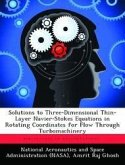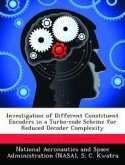With rapid progress made in employing computational techniques for various complex Navier-Stokes fluid flow problems, design optimization problems traditionally based on empirical formulations and experiments are now being addressed with the aid of computational fluid dynamics (CFD). To be able to carry out an effective CFD-based optimization study, it is essential that the uncertainty and appropriate confidence limits of the CFD solutions be quantified over the chosen design space. The present dissertation investigates the issues related to code verification, surrogate model-based optimization and sensitivity evaluation. For Navier-Stokes (NS) CFD code verification a least square extrapolation (LSE) method is assessed. This method projects numerically computed NS solutions from multiple, coarser base grids onto a freer grid and improves solution accuracy by minimizing the residual of the discretized NS equations over the projected grid. In this dissertation, the finite volume (FV) formulation is focused on. The interplay between the xi concepts and the outcome of LSE, and the effects of solution gradients and singularities, nonlinear physics, and coupling of flow variables on the effectiveness of LSE are investigated. A CFD-based design optimization of a single element liquid rocket injector is conducted with surrogate models developed using response surface methodology (RSM) based on CFD solutions. The computational model consists of the NS equations, finite rate chemistry, and the k-6 turbulence closure. With the aid of these surrogate models, sensitivity and trade-off analyses are carried out for the injector design whose geometry (hydrogen flow angle, hydrogen and oxygen flow areas and oxygen post tip thickness) is optimized to attain desirable goals in performance (combustion length) and life/survivability (the maximum temperatures on the oxidizer post tip and injector face and a combustion chamber wall temperature).








